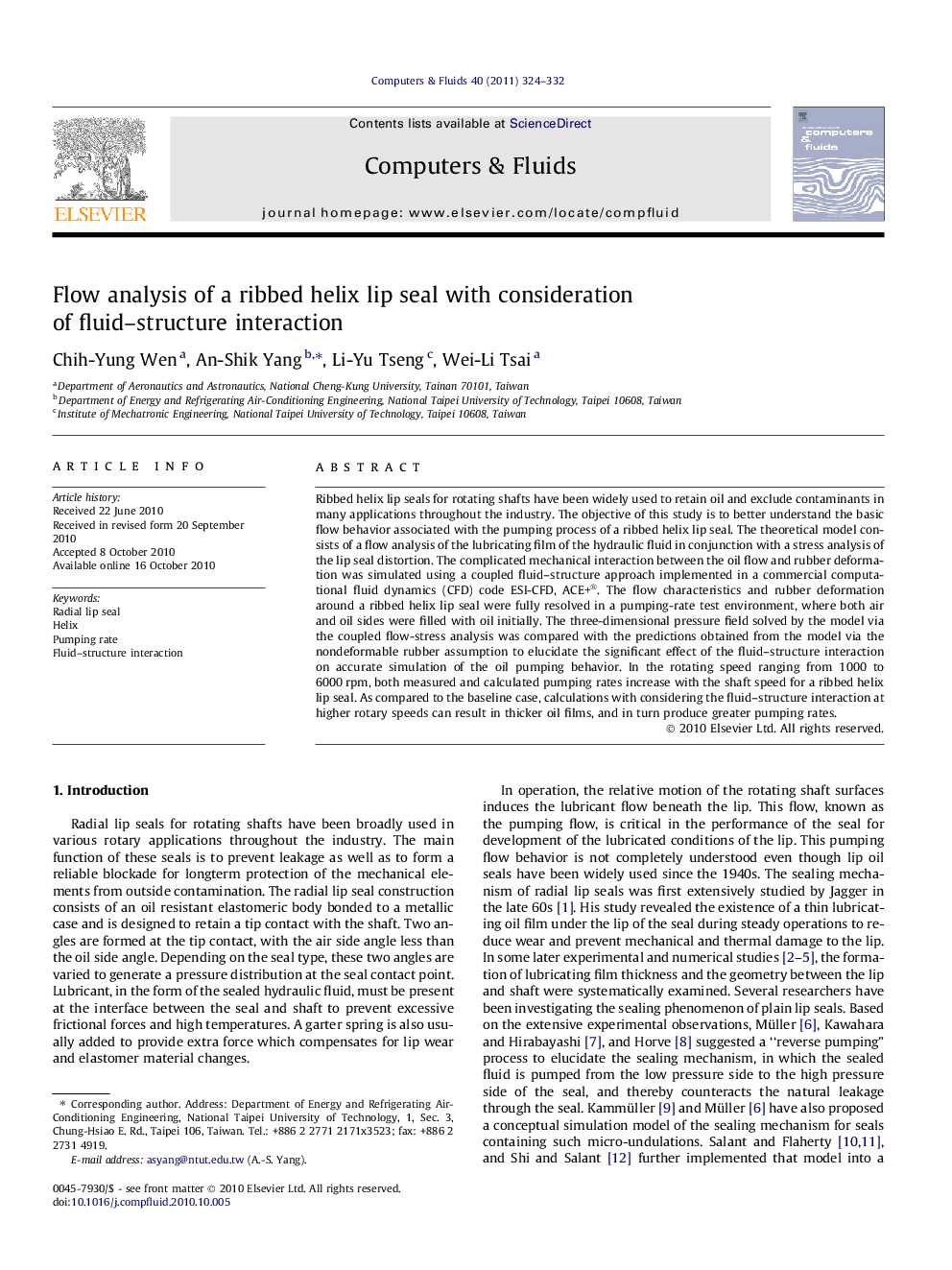| Article ID | Journal | Published Year | Pages | File Type |
|---|---|---|---|---|
| 762647 | Computers & Fluids | 2011 | 9 Pages |
Ribbed helix lip seals for rotating shafts have been widely used to retain oil and exclude contaminants in many applications throughout the industry. The objective of this study is to better understand the basic flow behavior associated with the pumping process of a ribbed helix lip seal. The theoretical model consists of a flow analysis of the lubricating film of the hydraulic fluid in conjunction with a stress analysis of the lip seal distortion. The complicated mechanical interaction between the oil flow and rubber deformation was simulated using a coupled fluid–structure approach implemented in a commercial computational fluid dynamics (CFD) code ESI-CFD, ACE+®. The flow characteristics and rubber deformation around a ribbed helix lip seal were fully resolved in a pumping-rate test environment, where both air and oil sides were filled with oil initially. The three-dimensional pressure field solved by the model via the coupled flow-stress analysis was compared with the predictions obtained from the model via the nondeformable rubber assumption to elucidate the significant effect of the fluid–structure interaction on accurate simulation of the oil pumping behavior. In the rotating speed ranging from 1000 to 6000 rpm, both measured and calculated pumping rates increase with the shaft speed for a ribbed helix lip seal. As compared to the baseline case, calculations with considering the fluid–structure interaction at higher rotary speeds can result in thicker oil films, and in turn produce greater pumping rates.
